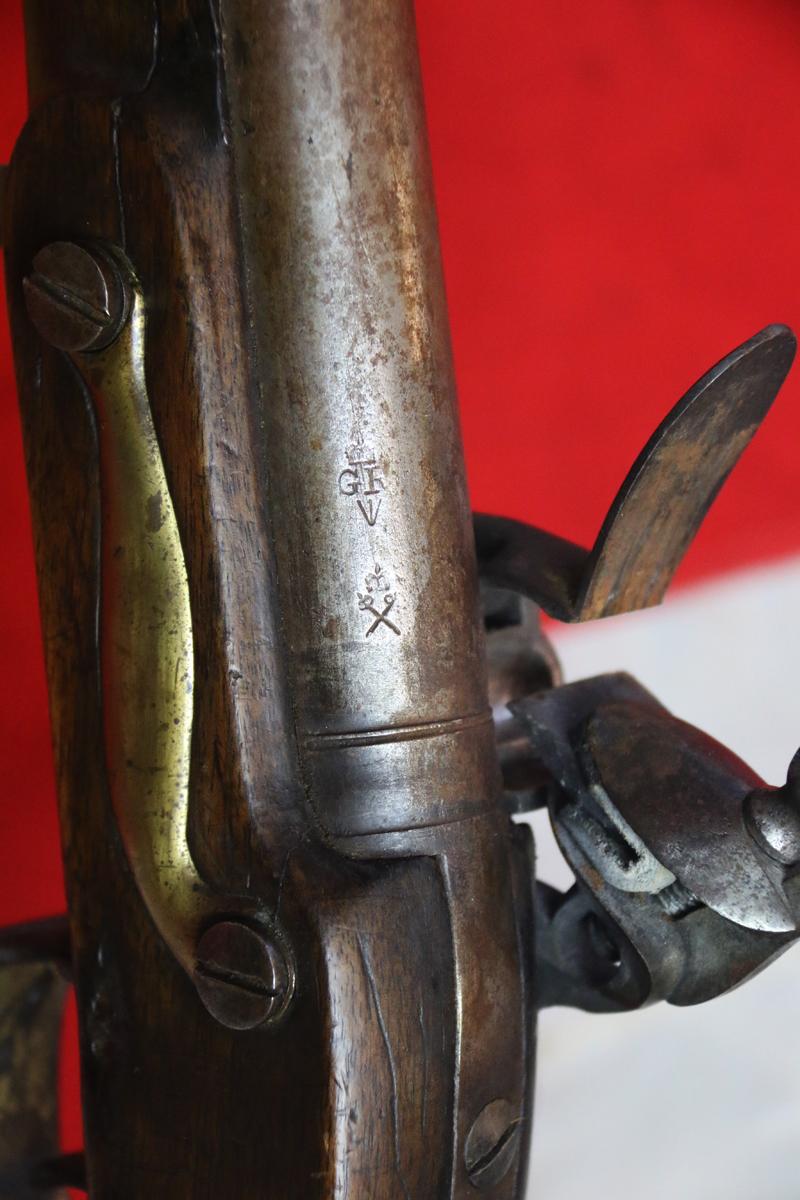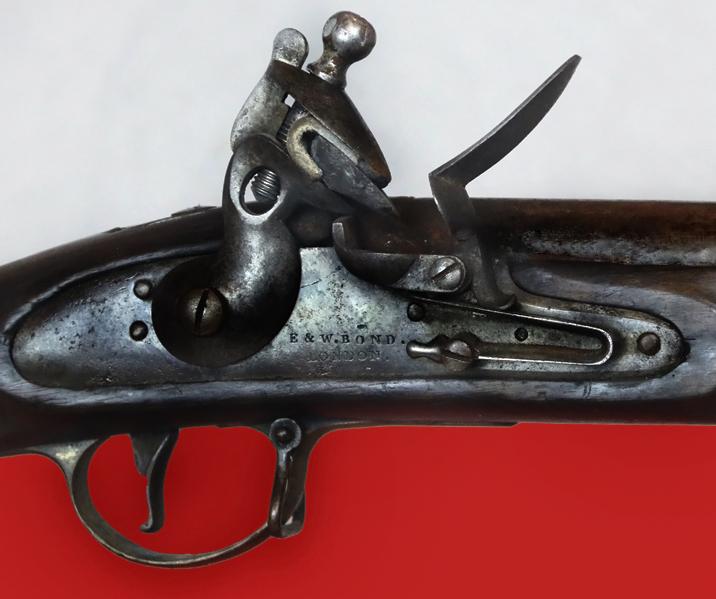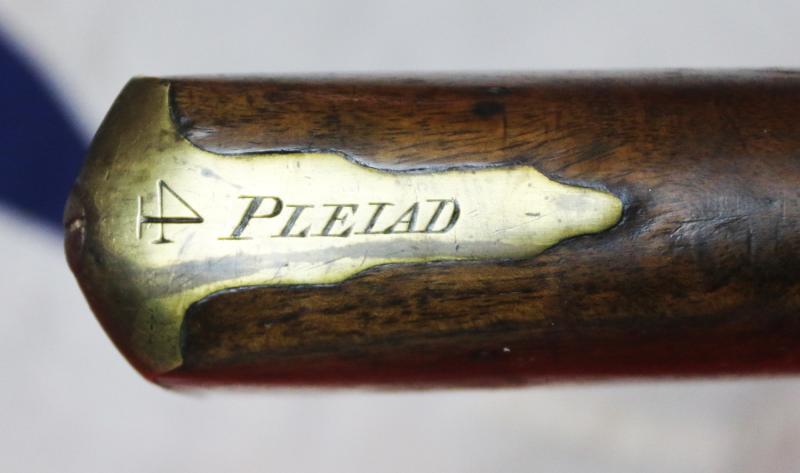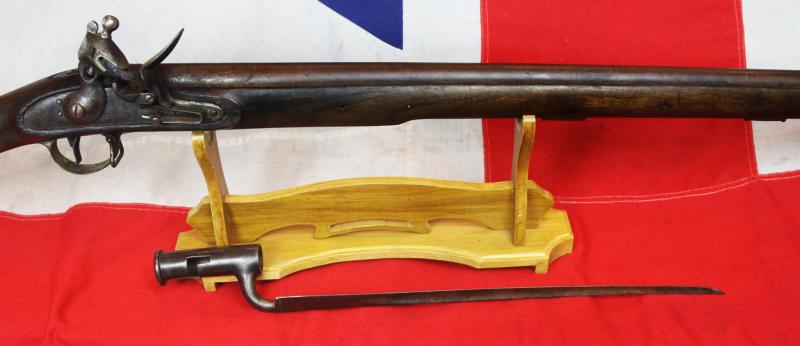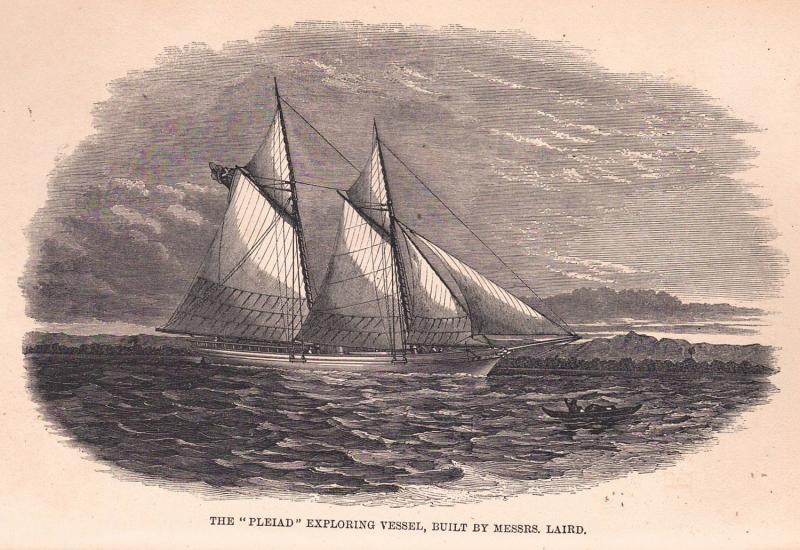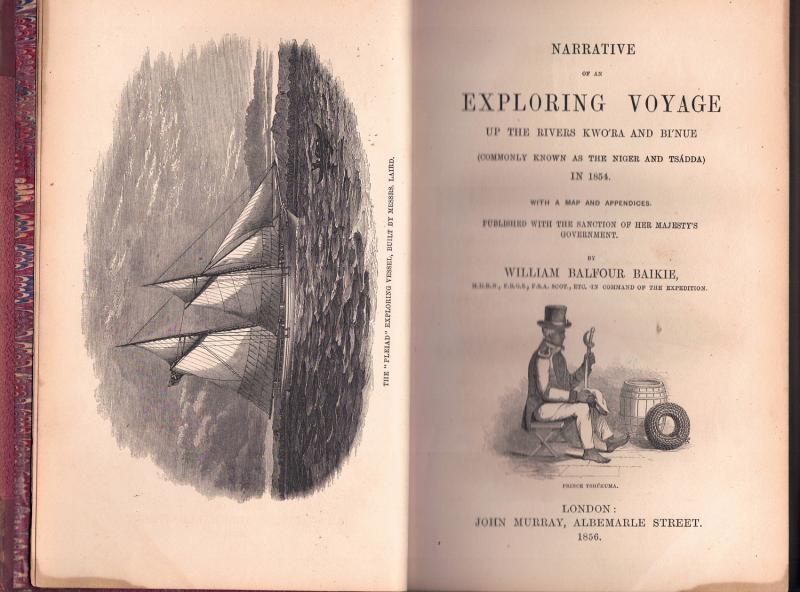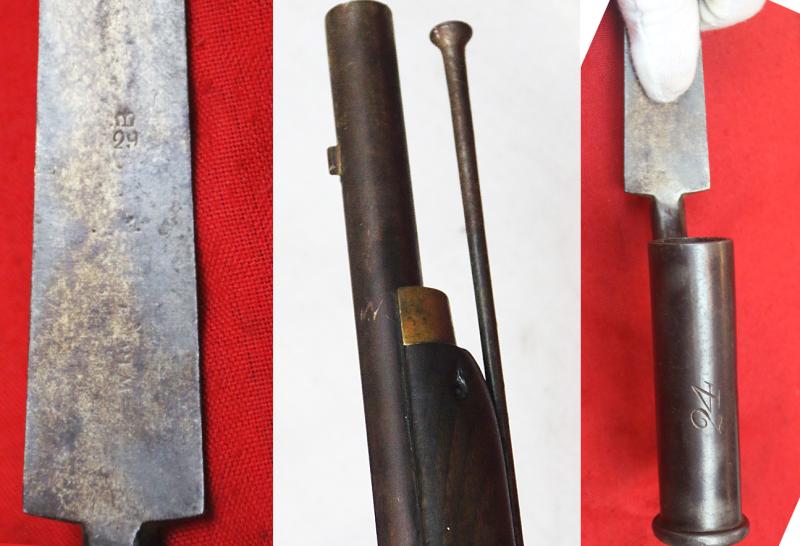A Super & Historical Brown Bess Flintlock Musket & Bayonet. In Its Final Service Days, Part of the Arms Used by The Expeditionary Sailing Schooner & Steam Ship of the River Niger. Engraved With the Name of The 1st Propeller Driven Exploring Steamship
The Schooner and expedition was under the command of Dr. William Balfour Baikie, R.N. a famed explorer and renown anti-slaver.
The musket is in super condition made by Bond of London. Complete with its standard, regulation, ordnance stamped Brown Bess bayonet, numbered 24. Regulation Brown Bess barrel .750 inch bore, and of 39 inches long, stamped with Board of Ordnance view and proof markings of circa 1790. Typical all brass mounts and fittings, trigger guard side plate fore-end and butt plate, with both steel sling swivels present, and a fine walnut stock. the ships name, 'Pleiad' engraved to the butt tang with the ship's gun's gun-rack numbering, '4'. The regulation trigger guard has a large number engraved, 22 this may likely be a previous use regimental number such as the Cheshire Regt, {the 22nd Foot}
Edward Bond was at 45 Cornhill, London, from 1800 to 1830, during this time he was joined by William, they moved to Lombard St. in around 1830
The vessel, named the Pleiad, was an extremely interesting and historical sailing ship. It was built by John Laird, and she was a sailing schooner, and, an auxiliary steam ship, with a unique 'lifting' propeller, and is said to have been the first exploring vessel to have been fitted with an additional propeller. Her length was 105 feet and her beam 24 feet. She had a 40-horse-power engine.
The Pleiad was schooner rigged, and the lifting propeller prevented the screw from retarding her speed under sail. This was before coaling stations were established on the route, and the vessel was intended to carry her coal from England under sail and to reserve it for use on the Niger.
William Baikie M.D. (1825-1864) was born in Orkney and studied medicine at Edinburgh University. He joined the Royal Navy in 1848 and soon attracted the notice of Sir Roderick Murchison who secured Baikie the post of surgeon and naturalist to the Niger Expedition in 1854. One of Baikie’s most important observations was on the use of quinine to prevent malaria as no one on the expedition contracted the disease. During the expedition, the senior officer, Consul John Beecroft, died and Baikie took command. Ascending the Benue about 250 miles beyond the point reached by former explorers, he returned and reached the mouth of the Niger, after a voyage of 118 days, without the loss of a single man. The expedition was partly funded by Laird of Birkenhead -- the 266-ton screw yacht Pleiad was designed by William Laird Jr and built by John Laird of Birkenhead to meet whatever unknown challenges cropped up, and was well armed with a single 12pdr gun, four swivel guns, a number of Minie guns together with pistols, shotguns and trade muskets. Baikie also used it for his second expedition of 1857 but it was wrecked in rapids. Baikie determined to carry out the purposes of the Expedition. He first considered establishing a British Consular Agency at Kabba but faced opposition from the local king of the region of Niger -- probably because Baikie was an anti-slaver firmly against the slave trade, which still provided a generous income for some tribal leaders and especially the local king. Instead, he chose Lokoja as the base of his future operations, it being the site of the model farm established by the Niger Expedition of 1841, and abandoned on the death of most of the white settlers. After Baikie's death, the British government abolished the consulate (1866), but the trading post remained influential. The district where Baikie had worked so successfully was finally secured for the UK through private enterprise some 20 years later and Lokoja became the capital of the Northern Nigeria Protectorate. Baikie wrote up the 1854 Expedition in his Narrative of an exploring voyage up the rivers Kwóra and Binue (commonly known as the Niger and Tsádda) in 1854.
Thanks to Laird’s forethought on all points she did well. Knowing the climate by experience, he insisted on keeping the number of Europeans to the minimum. The Pleiad left under the command of Dr. William Balfour Baikie, R.N., who dosed the ship’s company with quinine night and morning. When she reached Fernando Po, Dr. Baikie learned that Beecroft had died. Baikie decided to go up the river. He had engine trouble and the Pleiad ran aground several times, but he reached the confluence of the Niger and the Benue. Baikie ascended the Benue farther than any white man before him. Unfortunately the river began to fall. Baikie left the little vessel and went on farther by canoe until he was sure that Barth was not in the district. Then he returned to the Pleiad.
He traded her cargo, and she sailed back to England without the loss of a man by disease or accident, a new and wonderful event in the story of the Niger. He established that the river which Barth had reached was the one which flowed into the Niger.
The National Maritime Museum, Greenwich, have two matched examples of pistols from the set of the arms in the ship's arms locker, also named for the Pleiad, and similarly made by Bond of London, Object IDs AAA2432 & AAA2432.2. Another brace of pistol from the gun locker of the Pleiad and named as such sold at auction for just shy of £4,000.
To demonstrate the historical interest and status of the ship's voyage of exploration, an original copy of the book written by Dr. William Balfour Baikie, R.N., detailing his voyage aboard the Pleiad, published in 1856, can fetch upwards of £1,000. See a photo of his book in the gallery. For information and education purposes only, book not available
Narrative of an exploring voyage up the rivers Kwóra and Binue (commonly known as the Niger and Tsádda) in 1854.
Baikie, William Balfour
Published by London : Murray, 1856
The gun and action are very good for age, with an incredibly tight and crisp action, with just age and wear commensurate for its period and use both at sea and river. Small sliver of wood lacking forward of the lockplate, on the inside, beneath the barrel
Code: 24859
3495.00 GBP




